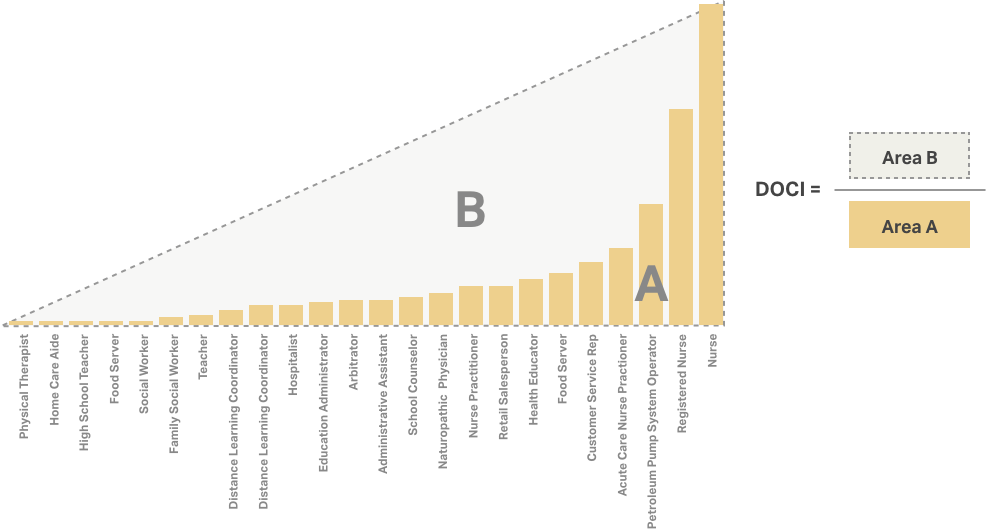Table of Contents
Introduction
Have you wondered whether or not a degree leads to a set of specific career opportunities? For instance, you would expect a pre-law student to probably attend law school and eventually become a lawyer. However, the same can’t be said about sociology students, who rarely become professional Sociologists, save the few who end up in academia. Based on CareerExplorer's data, the post-education lives of sociology students are indeed incredibly diverse and include careers spanning social work to hospitality.
We wanted to put a number to this concept. We call it degree specificity. Degree specificity is a measure of how concentrated or diverse are the career outcomes following a degree. The higher the degree specificity, the more concentrated, the lower, the more diverse.
Methodology
The DOC index is a measure of statistical dispersion intended to measure the distribution of real career outcomes that arise from attaining a specific degree. Each degree has a unique DOC index.
The GINI coefficient, a measure of income (in)equality, inspired the DOC index. It is mathematically equal to the adjusted cumulative share of career outcomes divided by the line of equality.
To make things more real, consider the example of a Nursing degree. Imagine that each point on the x-axis on the graph below represents one of the 800 careers on CareerExplorer. The y-axis represents the cumulative share of people that entered each of those careers following their psychology degree. The specificity index is calculated by dividing the area of the actual cumulative distribution of career outcomes by the line of perfect equality (the theoretical distribution of outcomes if career outcomes were perfectly distributed.
How DOCI is Calculated
Illustrative distribution of Nursing degree career outcomes

In this case, a higher number would imply a more evenly distributed set of career outcomes. Accordingly, we take the reciprocal (1/x) of this figure to measure specificity.
Before plotting the career outcome distribution in the aforementioned steps, two adjustment steps are taken.
- Have you wondered whether or not a degree leads to a set of specific career opportunitiest? For instance, you would expect a pre-law student to probably attend law school and eventually become a lawyer. However, the same can’t be said about a sociology student, who rarely become professional Sociologists, save the few who end up in academia. Based on CareerExplorer's data, the post-education lives of sociology students are indeed incredibly diverse and include careers spanning social work to hospitality.
- A decay factor is applied whereby careers that occur significantly after a degree is undertaken contribute less to the cumulative distribution than careers that occur immediately after a degree.
- Rare careers are given more weight in the cumulative distribution than common careers. For instance biomedical engineer has more weight than retail sales person.
Insights
Liberal Arts degrees do not have specific career outcomes
It likely comes as no shock to readers that the majority of liberal arts degrees have low concentration indexes. In fact, of the ten degrees with the lowest DOCI, only Biology and Business Management and Administration do not fit in the Arts department.
The most popular degrees do not have specific job prospects
Degrees in the bottom quartile of DOCI had nearly four times the enrollment of degrees in the top quartile.